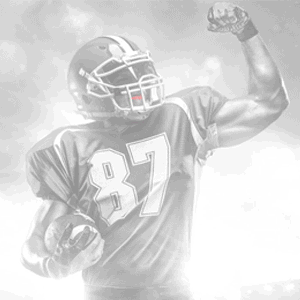Breaking The Code: What Athletes Are Really Saying About Mouthguards

 In nearly every sports league across the nation — from peewee to high school to the pros — mouthguards are a mandatory part of uniforms. This is particularly true for contact sports, as mouthguards play a vital role in protecting athletes against impact to the face, mouth or jaw.
In nearly every sports league across the nation — from peewee to high school to the pros — mouthguards are a mandatory part of uniforms. This is particularly true for contact sports, as mouthguards play a vital role in protecting athletes against impact to the face, mouth or jaw.
However, as a coach or athletic trainer, you may notice that mouthguards are not your players’ favorite piece of gear and they tend to make a lot of excuses for not wearing them. But do they actually mean what they’re saying?
Let’s try to break the code and figure out exactly what your athletes are trying to say about their mouthguards:
What Your Players Say: “I lost my mouthguard because it’s so small; it fell right out of my bag.”
What Your Players Mean: “I didn’t value my mouthguard and left it in my locker or at home.”
Sure, mouthguards are one of the smallest pieces of athletic equipment … but that has nothing to do with athletes losing them all the time.
Mouthguards get lost because athletes don’t value them. They are non-descript pieces of rubber, as plain and generic as thigh and hips pads. But do your players ever lose their jerseys? What about their track jackets or even their lucky socks?
When your players have a piece of gear they identify with — typically the equipment that features team logos or their numbers — they treasure it and wear it even when they’re not on the field, court or ice.
And they certainly don’t lose them.
What Your Players Say: “I don’t wear my mouthguard because it distracts me.”
What Your Players Mean: “My mouthguard is really uncomfortable.”
While your players aren’t lying, they aren’t telling the whole story. Have you ever had a tag in the back of your t-shirt irritate you? Things that are uncomfortable are traditionally distracting.
When your players’ mouthguards are too bulky and have too much material in the areas that don’t require it, they are uncomfortable to wear. That also means they’re not providing the proper protection. This is a common complaint about stock or generically made mouthguards like boil-and-bite guards.
In order for mouthguards to be comfortable and effective, they need to be fit to each athlete’s individual mouth structure. After all, much like fingerprints, everyone’s mouth is different and unique. Your players’ guards should fit intimately against their upper teeth, which also allows for optimal airflow and the ability to breathe, drink and communicate clearly.
That helps to alleviate those distractions.
What Your Players Say: “I chew my mouthguard because I’m nervous or concentrating.”
What Your Players Mean: “My mouthguard doesn’t fit well and I’m just keeping it in.”
Again, mouthguards should stay firmly on your athletes’ upper teeth … and that means without biting or clenching. Chewing usually means that your player’s mouthguard just doesn’t fit properly; but the material of the guard also plays a major factor.
One of the main reasons your players chew their mouthguards is that those same boil-and-bite mouthguards mentioned earlier were designed in the 1960s and have not changed in the fifty years since. Believe it or not, that technology — while still widely used — is wildly outdated.
Welcome to the 21st century, where mouthguards are made of a much denser material than their predecessors, using a heat and pressure-laminated design. And more durable material means denser material, not thicker. The denser material provides more resistance to chewers, keeping the guard safe without sacrificing any comfort.
That means your player’s mouthguard is more resistant to being chewed and not so soft that it looks like a dog’s chew toy after only one game.
What your players are saying isn’t always what they really mean, especially when it comes to their mouthguards. Break the code with custom mouthguards.






